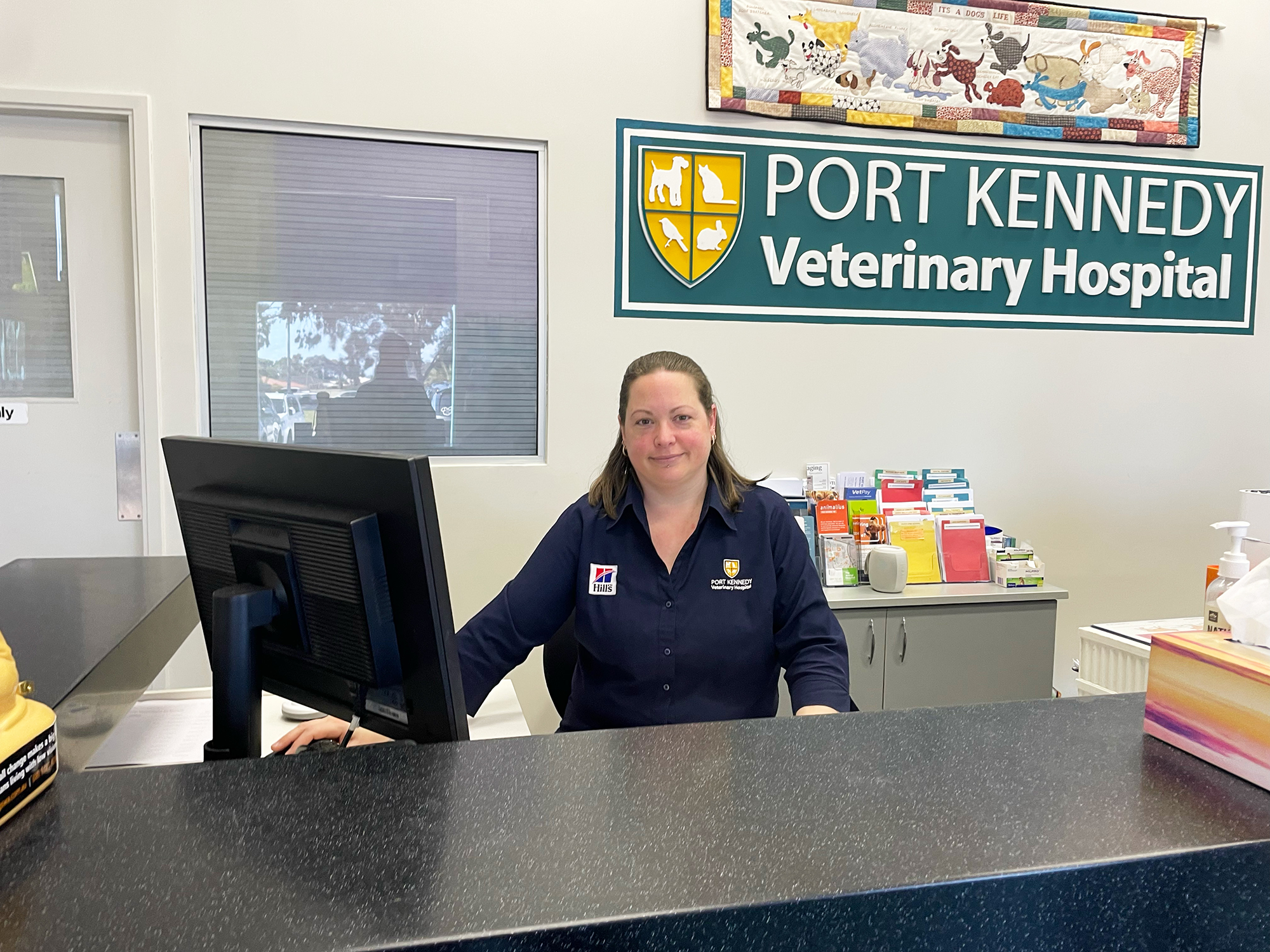
- Why Vedi?The cloud health platform, locked to the pet's microchip.
Smart modules.
Sidekick AInew - About
Get to know us.
Resources
- Pricing
- Contact

Vedi member since: April 2025
Pet microchips scanned: 1,000+
Pathology submissions: about 15 per week
Time saved: 5-10 minutes per pathology sample
Vet nurse time freed up: 1 hour+ per day that was usually spent on admin is now dedicated to more patient-facing work and supporting the doctors.
Pet with unregistered microchips identified: 133+ (12% of overall pet patients scanned)

In her 22 years at Port Kennedy Vet Hospital, veterinary nurse Meg McLeish has seen many systems come and go. But the transition to Vedi stands out; she says it was one of the easiest transitions the hospital has ever made.
“No one likes change. But Vedi got taken up pretty quickly, because of how easy it is to do pathology now.”
Port Kennedy Vet Hospital uses Vedi for its pathology and microchip registration workflows. Once a pet patient is scanned in with a Vedi scanner, all pathology and microchip registration procedures are locked to its microchip. This has saved hours of admin work, and improved patient safety by reducing errors.
Vedi has become such an essential part of Port Kennedy’s daily workflow in the six months since they signed on, that they’ve made sure that there is a Vedi scanner easily within reach:
“We’ve now got a scanner in each of the consult rooms, one out front and one out back, so five Vedi scanners in total. We scan for every opportunity.”
So far, Port Kennedy has submitted 375 pathology samples through Vedi, saving 5-10 minutes of processing time per sample.
“The [pathology lab’s] online process is very long-winded. It's like 20 pages you click through. A lot of them aren’t even relevant to the sample we’re submitting. And then you've gotta write down information on each of the tubes. Now with Vedi it’s just simply scan, scan, scan, done. Staff are like, “oh, this is so much easier!””

Meg was tasked with the Vedi rollout, and she got straight to work making sure that everyone on the team was well-informed and knew what to expect.
“I sent training videos and did in-person demonstrations. I also typed up an instructional step-by-step sheet on how it works, and that was part of an email that we sent out to everyone. There’s a lot of people on the team, and we don't all overlap because we’re on different shifts – so it all had to be very clear and straightforward.”
While there were some initial concerns, everyone got on board with the rollout.
“Some people were initially hesitant, like, oh, I don't want to enter my personal information on an unknown platform. But I reassured them that it only needs basic contact details, to verify that they exist [for data security reasons].”
Six months into using Vedi, the whole clinic has embraced it.
“Everyone uses Vedi: the front-of-house staff try to do as much as we can in the waiting room, through check-in and checking microchips. Then when the pets go through to the consults, the vets also scan them. Then any samples that get sent for pathology get scanned into Vedi by the nurses.”
It’s made them realise that all the previous admin they had to do before adopting Vedi not only took away time that could be better spent with patients, it also became a mental burden on the staff.
“It's only if we have an animal without a microchip or if we've somehow not scanned their microchip before taking a pathology sample, that we still have to do it the old way. Now when staff need to submit pathology the old way, they say, “I wish we’d had scanned that pet in with Vedi!”
Only pay for what you use, no lock-in contracts, cancel anytime.